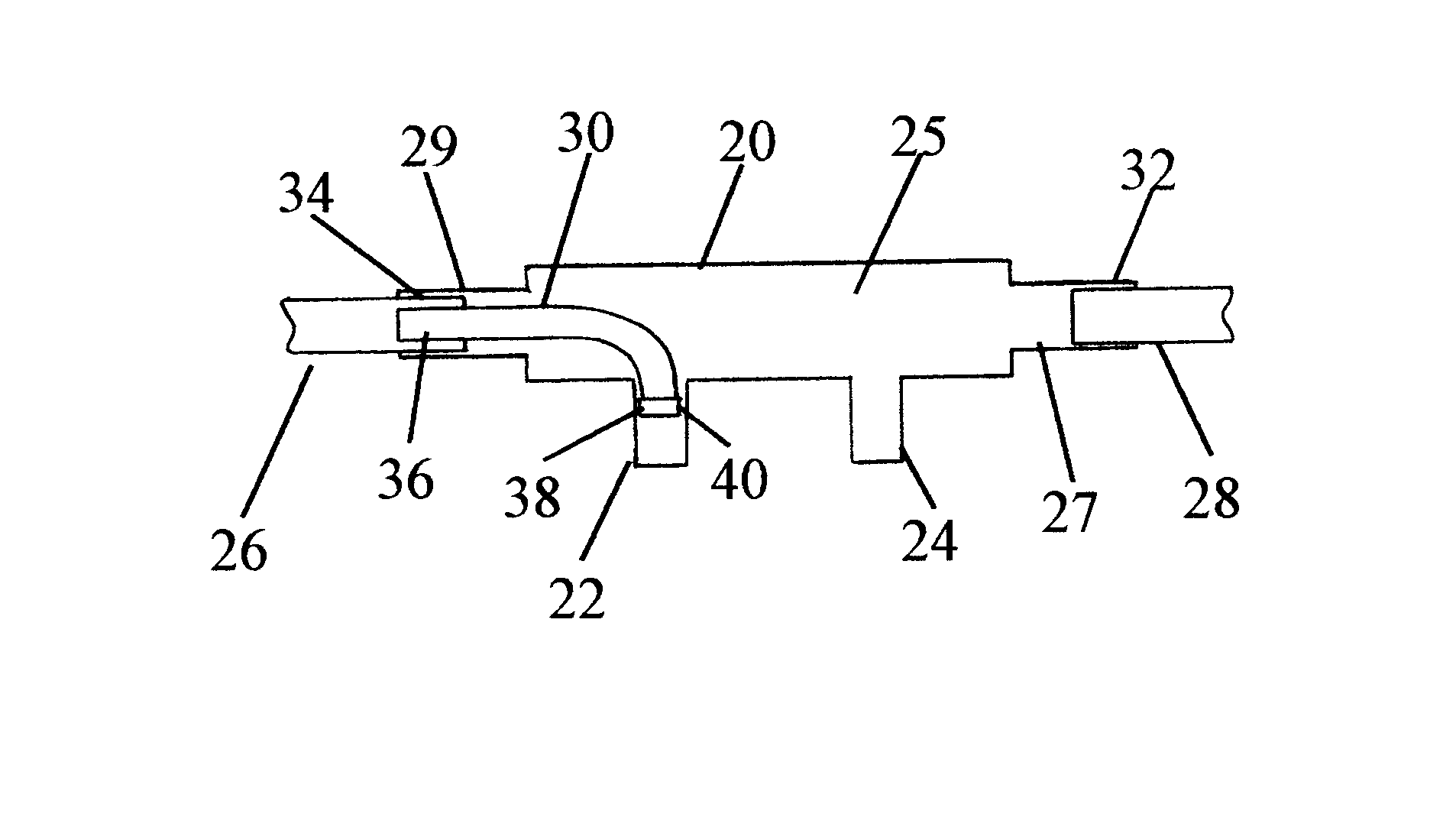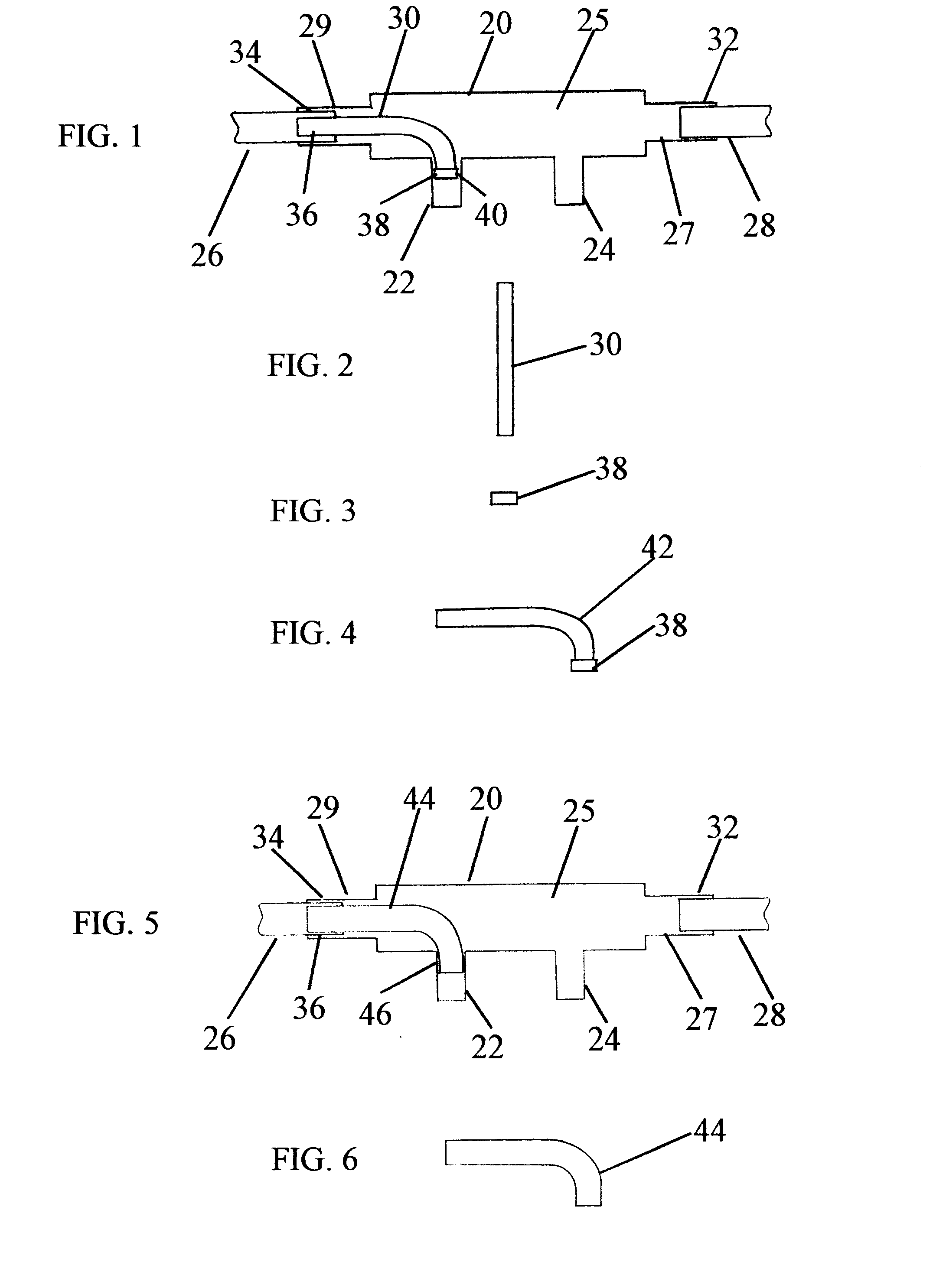Cannula for the separation of inhaled and exhaled gases
a technology of inhaled and exhaled gases and cannulas, which is applied in the direction of medical science, diagnostics, other medical devices, etc., can solve the problems of poor correlation between the measured amount of carbon dioxide and the actual amount, the inability to accurately measure the correlation between the measured level of carbon dioxide in the patient's blood and the level of carbon dioxide in the patient's exhaled gas, and the inability to provide adequate separation between the treating gas and the patient's ex
- Summary
- Abstract
- Description
- Claims
- Application Information
AI Technical Summary
Benefits of technology
Problems solved by technology
Method used
Image
Examples
Embodiment Construction
FIGS. 1-4 illustrate how a conventional cannula may be modified using the present invention, to create a cannula that eliminates the undesirable dead space and provide a direct, isolated flow channel through which a patients exhaled gases pass uncontaminated, facilitating more accurate measurements. FIG. 1 shows a plan view of a conventional nasal cannula 20 with a preferred embodiment of a flexible connector 30 with a seal 38. The cannula 20 consists of a hollow body 25 with two hollow nasal nares 22 and 24, which are designed to fit into the nasal passage of a patient. The cannula body 20 may be formed or molded from flexible plastic or other material. The entire cannula body 20 is preferably made from a flexible plastic material with elastic properties.
The flexible connector 30 shown in FIG. 2 is a hollow tube and its dimensions are dependent on the design of the nasal nare 22 and cannula port 29. The outside diameter of the flexible connector 30 is typically dependent on the ins...
PUM
 Login to View More
Login to View More Abstract
Description
Claims
Application Information
 Login to View More
Login to View More - R&D
- Intellectual Property
- Life Sciences
- Materials
- Tech Scout
- Unparalleled Data Quality
- Higher Quality Content
- 60% Fewer Hallucinations
Browse by: Latest US Patents, China's latest patents, Technical Efficacy Thesaurus, Application Domain, Technology Topic, Popular Technical Reports.
© 2025 PatSnap. All rights reserved.Legal|Privacy policy|Modern Slavery Act Transparency Statement|Sitemap|About US| Contact US: help@patsnap.com


